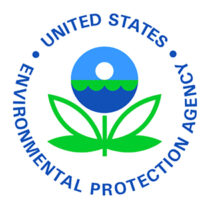Designating PFOA and PFOS under CERCLA would improve transparency, and accountability, and deliver on Administrator Regan’s PFAS Strategic Roadmap
WASHINGTON (August 26, 2022) – Following through on the Biden-Harris Administration’s commitment to tackle environmental injustice and improve public health, the U.S. Environmental Protection Agency (EPA) is taking significant action under Administrator Regan’s PFAS Strategic Roadmap to protect people and communities from the health risks posed by certain PFAS, also known as “forever chemicals.†EPA is proposing to designate two of the most widely used per- and polyfluoroalkyl substances (PFAS) as hazardous substances under the Comprehensive Environmental Response, Compensation, and Liability Act (CERCLA), also known as “Superfund.†This rulemaking would increase transparency around releases of these harmful chemicals and help to hold polluters accountable for cleaning up their contamination.
The proposal applies to perfluorooctanoic acid (PFOA) and perfluorooctanesulfonic acid (PFOS), including their salts and structural isomers, and is based on significant evidence that PFOA and PFOS may present a substantial danger to human health or welfare or the environment. PFOA and PFOS can accumulate and persist in the human body for long periods of time and evidence from laboratory animal and human epidemiology studies indicate that exposure to PFOA and/or PFOS may lead to cancer, reproductive, developmental, cardiovascular, liver, and immunological effects.
“Communities have suffered far too long from exposure to these forever chemicals. The action announced today will improve transparency and advance EPA’s aggressive efforts to confront this pollution, as outlined in the Agency’s PFAS Strategic Roadmap,â€Â said EPA Administrator Michael S. Regan. “Under this proposed rule, EPA will both help protect communities from PFAS pollution and seek to hold polluters accountable for their actions.â€
Many known and potential sources of PFAS contamination are near communities already overburdened with pollution. If finalized, the rulemaking would trigger reporting of PFOA and PFOS releases, providing the Agency with improved data and the option to require cleanups and recover cleanup costs to protect public health and encourage better waste management.
It would also improve EPA, state, Tribal nation, and local community understanding of the extent and locations of PFOA and PFOS contamination throughout the country and help all communities to avoid or reduce contact with these potentially dangerous chemicals.
EPA is focused on holding responsible those who have manufactured and released significant amounts of PFOA and PFOS into the environment. EPA will use enforcement discretion and other approaches to ensure fairness for minor parties who may have been inadvertently impacted by the contamination. EPA is also committed to doing further outreach and engagement to hear from impacted communities, wastewater utilities, businesses, farmers, and other parties during the consideration of the proposed rule.
If this designation is finalized, releases of PFOA and PFOS that meet or exceed the reportable quantity would have to be reported to the National Response Center, state or Tribal emergency response commissions, and the local or Tribal emergency planning committees. A release of these or any other hazardous substance will not always lead to the need to clean up or add a site to the National Priorities List (NPL), liability or enforcement action. EPA anticipates that a final rule would encourage better waste management and treatment practices by facilities handling PFOA or PFOS. The reporting of a release could potentially accelerate privately financed cleanups and mitigate potential adverse impacts to human health and the environment.
Additionally, the proposed rule would, in certain circumstances, facilitate making the polluter pay by allowing EPA to seek to recover cleanup costs from a potentially responsible party or to require such a party to conduct the cleanup. In addition, federal entities that transfer or sell their property will be required to provide notice about the storage, release, or disposal of PFOA or PFOS on the property and a covenant (commitment in the deed) warranting that it has cleaned up any resulting contamination or will do so in the future, if necessary, as required under CERCLA 120(h).
EPA will be publishing the Notice of Proposed Rulemaking in the Federal Register in the next several weeks. Upon publication, EPA welcomes comments for a 60-day comment period.
As a subsequent step, EPA anticipates issuing an Advance Notice of Proposed Rulemaking after the close of the comment period on today’s proposal to seek public comment on designating other PFAS chemicals as CERCLA hazardous substances.
Today’s actions represent a significant milestone within the Biden-Harris Administration’s commitments to combat PFAS pollution and safeguard drinking water, specifically EPA’s October 2021 PFAS Strategic Roadmap. Under the Roadmap, EPA is working across the agency to protect the public from the health impacts of PFAS. EPA has taken a number of actions to deliver progress on PFAS including:
- Releasing drinking water health advisories for four PFAS – using the best available science to tackle PFAS pollution, protect public health, and provide critical information quickly and transparently;
- Making available $1 billion in grant funding through President Biden’s Bipartisan Infrastructure Law;
- Issuing the first Toxic Substances Control Act PFAS test order under the National PFAS Testing Strategy;
- Adding five PFAS Regional Screening and Removal Management Levels that EPA uses to help determine if cleanup is needed;
- Publishing draft aquatic life water quality criteria for PFOA and PFOS;
- Issuing a memo to proactively address PFAS in Clean Water Act permitting;
- Publishing a new draft total adsorbable fluorine wastewater method; and
- Issuing the fifth Unregulated Contaminant Monitoring Rule to improve EPA’s understanding of the frequency that 29 PFAS are found in the nation’s drinking water systems and at what levels and preparing to propose a PFAS National Drinking Water Regulation by the end of 2022.
What They Are Saying
“After more than two years pushing the EPA to list toxic PFOA and PFOS as hazardous substances, I am proud of today’s announcement by President Biden and EPA Administrator Regan, which will reduce pollution and protect public health. This important step will allow communities to pursue polluters – from manufacturers to irresponsible polluters – and hold them accountable for the damage done. I applaud the EPA’s continued work to address PFAS contamination and I will keep pushing for speedy cleanups across New York: from Long Island to Newburgh to Westchester and Niagara.†– Senate Majority Leader Chuck Schumer (NY)
“Too many communities across the country are struggling to address the presence of PFAS chemicals on their land and in their waters. Hat’s off to EPA for taking this bold and necessary step to get those responsible for this contamination to pitch in and help communities to clean up. This is the first step in a much-needed, all-hands effort to keep harmful PFAS chemicals out of our air, water, and soils.†– Senator Tom Carper (DE), Chairman of the Senate Environment and Public Works Committee.
“With this announcement, the tens of millions of Americans who live near a PFAS-contaminated site can finally rest easier knowing that help is on the way. This is the kind of leadership and care for public health our communities deserve, and I commend Administrator Regan for continuing to prioritize the best interests of the American people over those of corporate polluters. That this proposed rule ensures communities will finally get boots on the ground — and that polluters will pay the bill — is particularly laudable. This action comes as especially welcome news for environmental justice communities, who have endured the scourge of toxic PFAS contamination for far too long. I look forward to working with EPA to ensure this critically-needed proposed rule gets across the finish line.†– Congressman Frank Pallone, Jr. (NJ-06), Chairman of the House Energy and Commerce Committee
“Today’s proposal to designate two of the most widely used PFAS chemicals as hazardous substances is a critical step as we seek to combat these dangerous chemicals that wreak havoc on the environment and the health of our communities. Keeping these ‘forever chemicals’ from polluting water and sewage systems must also mean holding polluters accountable and financially responsible. I applaud today’s actions and look forward to making further progress through the Bipartisan Infrastructure Law, which invests $10 billion to address PFAS contamination.†– Congressman Peter DeFazio (OR-04), Chairman of the House Transportation and Infrastructure Committee
“Maine has been at the forefront of the PFAS crisis, and while we’re only at the beginning stages of understanding its scope, it’s been clear we urgently need to address the nationwide contamination. These PFAS chemicals are persistent, bioaccumulative, and toxic, posing serious health risks to all Americans. After years of pushing for federal action, I’m thrilled to see the EPA is finally taking steps to clean up contaminated sites and hold polluters accountable.†– Congresswoman Chellie Pingree (ME-01), Chair of the House Appropriations Subcommittee on the Interior, Environment, and Related Agencies
“All across the country, PFAS contaminations have put Americans’ health at risk. Moving forward with a CERCLA hazardous substance designation for PFOA and PFOS is an important step in fulfilling the agency’s commitments in its PFAS Strategic Roadmap and will ensure that communities are able to hold PFAS polluters accountable. I want to thank Administrator Regan and the EPA staff for their work, and I encourage the agency to finalize this proposal as quickly as possible.†– Congressman Paul Tonko (NY-20), Chairman of the House Energy & Commerce Subcommittee on Environment & Climate Change
“Today, our federal government is taking an important step toward protecting citizens from dangerous ‘forever chemicals’ like PFOS and PFOA. The EPA’s proposal to properly categorize these two PFAS chemicals as hazardous substances will ensure immediate transparency on the health and safety risks posed to our communities, as well as further safeguard all Americans from the harmful effects of PFAS contamination in the future. I am proud to support this action and look forward to the continued implementation of the PFAS Strategic Roadmap by Administrator Regan and the EPA.” – Congressman Brian Fitzpatrick (PA-01), Co-Chair of the Congressional PFAS Task Force
“I applaud this long overdue action to hold polluters accountable for contaminating communities with harmful PFAS chemicals. Thousands of communities have been harmed by PFAS contamination, including Oscoda, Michigan in my district. Today’s action is the first step to finally provide these communities with the resources they need to clean up these dangerous forever chemicals and ensure that polluters, not taxpayers, foot the bill.†– Congressman Dan Kildee (MI-05), Co-Chair of the Congressional PFAS Task Force
“Granite Staters know all too well the harmful impacts of PFAS chemicals, which are tied to adverse health effects and environmental pollution. The administration took an important step today toward classifying two of the most widely used and dangerous PFAS chemicals – PFOS and PFOA – as hazardous substances under the Superfund law. I’ve long pushed for this designation to increase transparency and hold polluters accountable, and I’ll keep working to improve our public health response and support Granite Staters affected by PFAS contamination.†– Senator Jeanne Shaheen (NH)
“Forever chemicals are an urgent public health and environmental threat for communities across the country, including the ones I represent, and the number of contamination sites nationwide continues to grow at an alarming rate. In 2018, we learned the Huron River was contaminated end-to-end with these chemicals after decades of industrial pollution and in response, I introduced the bipartisan PFAS Action Act to designate PFAS as the hazardous substances we know they are. I applaud President Biden and the EPA for taking this significant step forward. Designating PFOA and PFOS—the two most notorious and harmful chemicals—will go a long way in helping to finally jumpstart cleanups nationwide, prevent future PFAS contamination, hold polluters accountable, and protect Americans from the dangerous effects of these chemicals long-term. I thank the EPA for acting and will continue working with the agency to rid our environment and communities of harmful forever chemicals.†– Congresswoman Debbie Dingell (MI-12)
“I am pleased that the EPA is moving to designate PFOA and PFOS—two of the most common ‘forever chemicals’—as hazardous substances under CERCLA. Earlier this month, I joined over 100 of my colleagues to call on EPA to take this action. North Carolinians are too familiar with the harmful environmental and health effects of PFAS contamination, and this is an important step towards holding polluters accountable and cleaning up our communities. I want to thank EPA Administrator Regan for his leadership on this issue, and I look forward to learning more about the steps his agency is taking to protect our people from these chemicals. I will continue my work in Congress to do the same.†– Congresswoman Deborah Ross (NC-02)
“I applaud the EPA for taking bold and needed action to classify PFOA and PFOS as hazardous substances that will help protect New Yorkers and communities across the nation from the potential health risks posed by these forever chemicals. In New York, we’re at the forefront of the fight to ensure these harmful chemicals don’t pollute our communities and waterways while ensuring those who are accountable are cleaning up the contamination they cause. We stand with the EPA on this decision and will continue our aggressive work in New York to protect our communities from contaminants.” – Governor Kathy Hochul (NY)
“PFAS has impacted not only the environment, it has also impacted production agriculture in areas where water contamination or land applications of contaminated materials have taken place. While state agriculture agencies have safeguarded the food supply by removing known contaminated products from the food supply, we are only beginning to understand the extent of PFAS contamination. By designating PFAS as a hazardous chemical, we as a nation, begin the process of identifying the impacts and initiating the cleanup process.†– New Mexico Secretary of Agriculture Jeff M. Witte, Chair of the EPA Local Government Advisory Committee Health Communities Workgroup
“For decades, polluters dumped toxic PFOA and PFOS into scores of communities across the country with impunity. Today’s proposal will give the EPA and those communities critical new tools to finally hold those polluters accountable and force them to clean up their mess.†– Ken Cook, President of the Environmental Working Group





